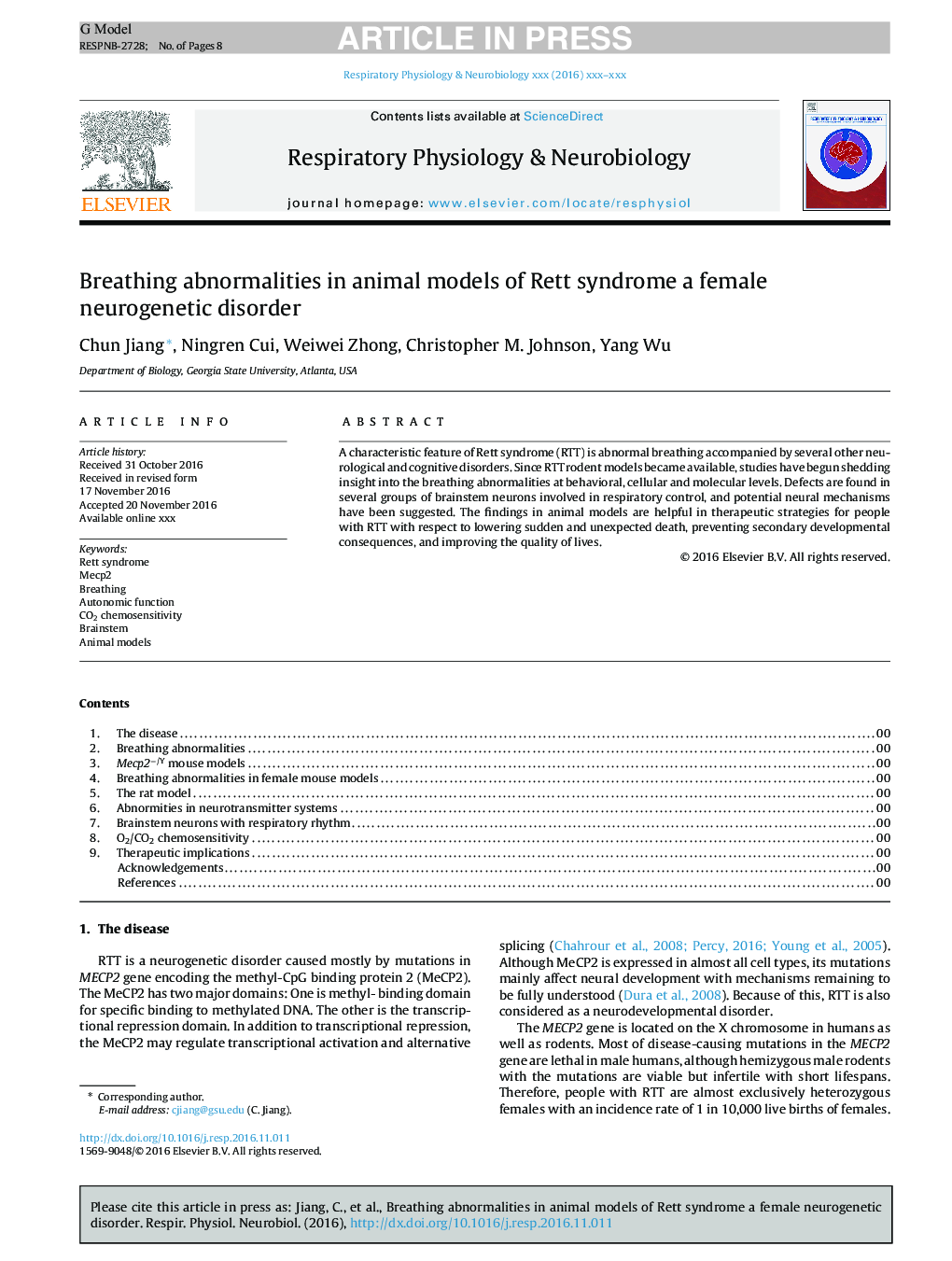| Article ID | Journal | Published Year | Pages | File Type |
|---|---|---|---|---|
| 5594095 | Respiratory Physiology & Neurobiology | 2017 | 8 Pages |
Abstract
A characteristic feature of Rett syndrome (RTT) is abnormal breathing accompanied by several other neurological and cognitive disorders. Since RTT rodent models became available, studies have begun shedding insight into the breathing abnormalities at behavioral, cellular and molecular levels. Defects are found in several groups of brainstem neurons involved in respiratory control, and potential neural mechanisms have been suggested. The findings in animal models are helpful in therapeutic strategies for people with RTT with respect to lowering sudden and unexpected death, preventing secondary developmental consequences, and improving the quality of lives.
Related Topics
Life Sciences
Biochemistry, Genetics and Molecular Biology
Physiology
Authors
Chun Jiang, Ningren Cui, Weiwei Zhong, Christopher M. Johnson, Yang Wu,
